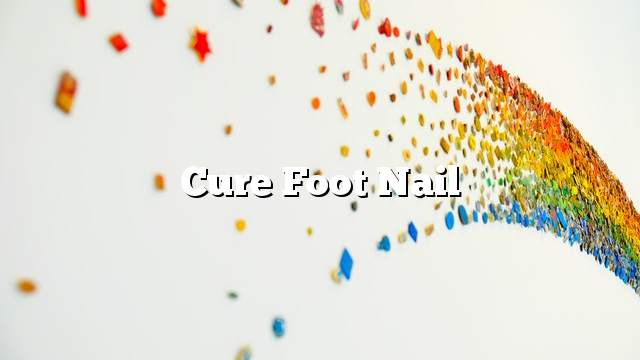corn
The foot nail appears in the shape of a small yellow block, mostly due to stiff layers of the skin of the foot. This is caused by the reaction of the skin to the occurrence of friction or pressure on a particular area of the foot, such as the wearing of narrow shoes for long periods or when walking Or standing for long periods, causing body weight and friction resulting in the formation of the foot nail, which may be painful, especially when wearing the shoe.
Cure foot nail
Natural remedies for foot nails
The ideal method for treating the foot nail is to avoid exposure to the worker that led to its formation, wear comfortable shoes, and take caution when walking and standing. The natural and home remedies for foot nails include:
- Immersion of the injured party in the water: Warming and soaking the feet and hands with warm water and soap softens the foot nail, making it easier to remove the thick layers of skin formed.
- Thinning of Thick Skin Layers: By rubbing the foot with the pumice stone, but it is not used for people with diabetes. The foot nail can be rubbed with a nail polish or shower towel to remove the harsh and thick skin layers, Use sharp tools to cut the skin.
- Moisturizing skin: By using moisturizers for hands and feet to keep skin soft and moist.
- Using baking soda: Baking Soda has antifungal and antibacterial properties and is able to gently peel the skin to make it easy to remove dead and dry skin layers. It can be used either by immersing the feet in a quantity of dissolved water Or by making a mixture such as a paste consisting of baking soda, water, and lemon, and placing it on the foot nail.
- Lemon Use: Using lemon juice alone or by adding cloves to it, then place it on the nail and leave it to dry.
- Using apple cider vinegar: Due to the fact that Apple Cider Vinegar has antibacterial and antifungal properties, as well as the ability of its acid content to soften the skin in the affected area.
- Use garlic: Garlic contains a large amount of antioxidants and has anti-bacterial and fungal properties, thus preventing inflammation of the skin in the affected area.
- Using onions and white vinegar: This is done by immersing onion pieces in vinegar for a day in a warm place. Then place these pieces on the foot nail and cover with a bandage to stay overnight. The foot nail is supposed to be removable the next morning. Times and times until the skin of the affected area is softened.
- Castor oil: Castor Oil is an effective remedy for removing the foot nail by putting a cast of castor oil on the nail, then wrapping it with a bandage and leaving it on the affected area at night.
- The use of English salt: Foot soaking in an English salt bath (Epsom Salt) and hot water for at least 15 minutes is one of the most effective ways to remove the foot nail.
Therapeutic procedures of the foot nail
The treatment of the foot nail is initiated when it is maintained despite self-care attempts and following the household instructions, or if the pain in the nail area appears significantly.
- Cut the excess skin layers when the doctor: Using a scalpel for this purpose, and it should be noted that this is not done by the patient for the possibility of infection.
- Pharmacological treatments for nail removal: Using salicylic acid (non-prescription) salts, follow the doctor’s advice regarding the details of their use, and if the affected area is large, the doctor can remove the salicylic in the form of gel (gel) .
- Use inner insoles for shoes: The use of shoe insoles may be described by the doctor in cases where the cause of the foot nail has a congenital defect in the foot, in order to prevent recurrence.
- surgeries: Doctors may recommend surgery in rare cases to correct the condition of the bones that cause friction.
Treatment of nail infection infection
In the case of an infected nail, the patient may feel pain. Pus or a clear liquid may come out of the nail. The inflammation may extend to the foot, which requires consultation with the appropriate physician when it occurs. Antibiotics) to remove pus and damaged skin.
Types of foot nail
The foot nail has many types, including the following:
- Nail steel foot: The hard foot path consists of a small patch of thick, dead-skin cells with a central nucleus.
- Soft Foot Nail: Soft Corn (Soft Corn) is soft on the outside of the foot compared to the hard foot, usually between the fourth and fifth fingers of the foot.
- Nail foot seed: Seed seed nail is small and stiff, usually on the bottom of the foot. It should be noted that if the seed nail appears in an area with a weight in the foot, it is very fragile. Some doctors believe that the cause of this type of foot bolts Is a blockage of ethnic channels (Sweat Ducts).
